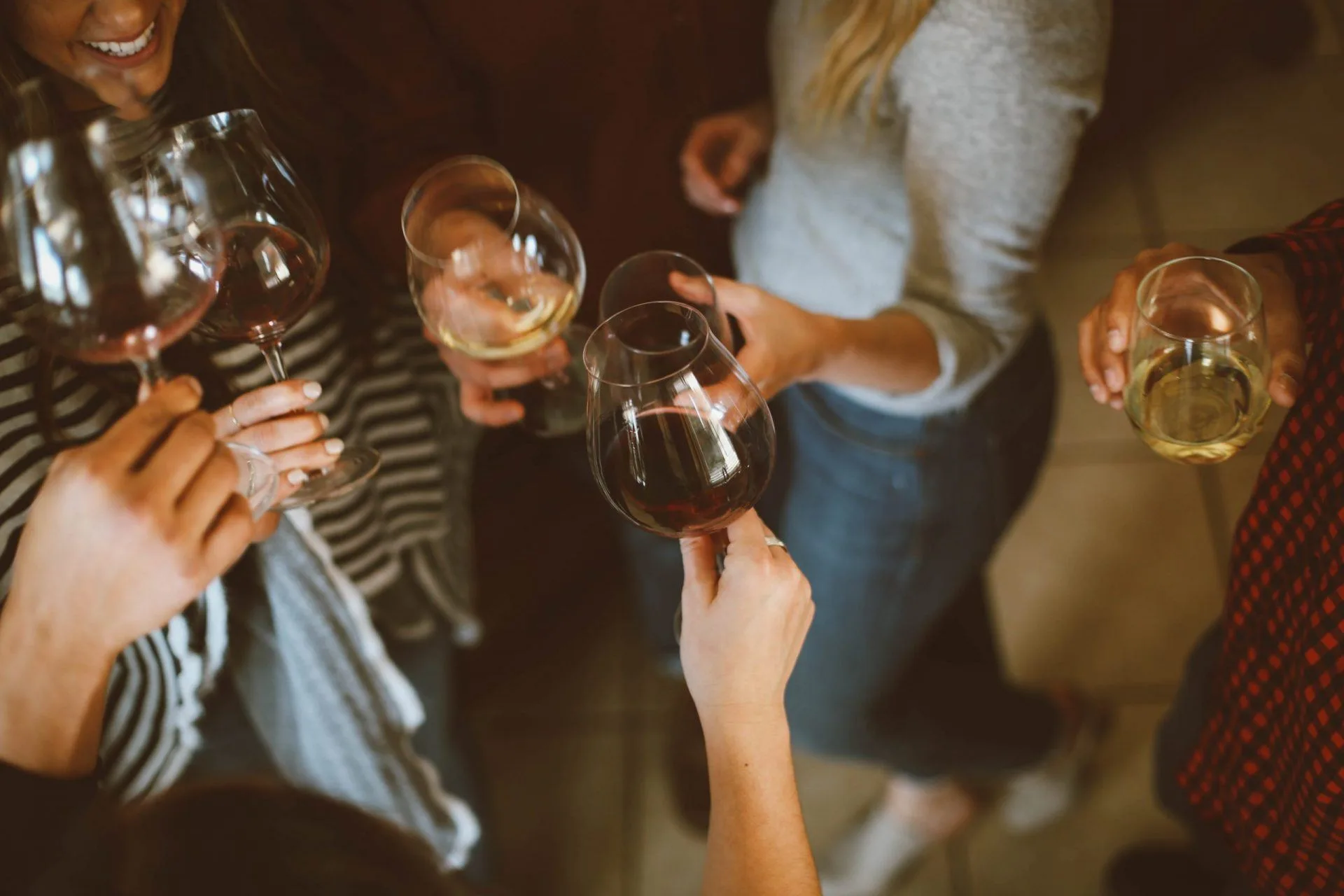It’s curious to me, that of all the substances we have imbibed through our history as humans, the one that we have branded, celebrated, and made available to all, is alcohol. Its use and misuse are at the root of so much insomnia, depression, anxiety, fatty liver, abuse, self-harm, harm to others, and disease. And yet, in a very clever PR campaign, we have glamorized this drinking ritual in the same way that Peter Stuyvesant made cigarettes and yachts sexy and demure. By Dr. Skye Scott
Alcohol is a toxin
Did you know that the effects of alcohol are due to a toxin? A metabolic byproduct that impairs brain function temporarily and hijacks your liver’s detoxification system?
If you Google a list of the substances that cause the most harm to self or others, the leading substance is by far alcohol. And yes! You could argue that this is because it’s the most consumed drug in the world.
However, the truth is that you never hear of anyone high on psilocybin or MDMA beating their wife. The harder drugs that amplify the nervous system often require alcohol to tame their effects. It’s these that have sinister and maniacal behaviors attached to them.
Excessive alcohol consumption is a disease
In 1918, a temporary prohibition was placed on alcohol to protect grain for the war effort and reduce the obvious consequences that excess drinking could have on society. Not long after, in 1933 this was lifted.What was born during this brief time of restriction was a gangster underworld that fed the belly of the thirsty masses. Perhaps the roots of excess were sewn in that time.
We all know that humans love to have what they are told they shouldn’t want. As far back as 1784, Benjamin Rush called excessive alcohol consumption a disease that harmed the psyche and the body equally.
In the 1920s, doctors and pharmacists were able to prescribe and dispense scripts for alcohol for medicinal purposes. This is resonant of the opiate crisis we are facing today. Paula Mejia wrote in his paper, “The Lucrative Business of Prescribing Booze During Prohibition”, about prescribers who wrote in excess of 500 whiskey prescriptions a day! The practice catapulted Walgreens, a popular American pharmacy chain, from 20 to 525 stores in that time.
Alcohol is a leading cause of death
What is now a $1.3 trillion per annum global business is responsible for being the leading cause of death in people aged 15 to 45.
Alcohol also results in 3,3 million deaths per annum worldwide.
It might seem obvious to change the way we imbibe and sell such a substance, but economics are at the heart of a capitalist system. When will we see public health education about over-consumption?
We have lost connection
One of the advents of modern Western life is the separation of people. It’s unusual these days for four generations to squabble and commune under one roof in the higher-LSM demographic. A desirable pursuit today is your own shiny perimeter – a white picket fence. I wonder if the intimacy lost here has anything to do with the needs people have these days for social lubricants like alcohol.
I wholeheartedly believe that a lack of purpose and meaningful connection drives such pandemics. Social rituals like tribal dance, connection to nature, choral song, and ululation have been replaced largely by boozy lunches, dingy bars and shebeens.
Our bodies are so magnificent. We hold so much wisdom and information within, both historical and present. Imprints of experiences and even intergenerational ones are embossed into our cells. What about the built-in intelligence of ecstatic dance and breath? Dr. Stanislov Grof, a Czechoslovakian psychiatrist, described, with his wife Christina, the use of breath to attain altered states of consciousness without poison.
If you want to alter your state of mind, rather try breathwork
After his exposure to the healing potential of LSD, he and Christina pioneered a technique used all over the world today called Holotropic breathwork. It sounds like a left-of-field suggestion, but could we be teaching this in high schools as a tool for connection to self and others?
Every year, more than 273 000 people (according to the WHO) die in car accidents and more than half of these accidents are thought to involve alcohol. Driving under the influence is a cultural norm in many countries that needs to change.
I’m not suggesting that it’s all bad. Many of the Blue Zones in the world have a daily ritual that involves alcohol. What differentiates that ritual is the context, the extent, the set, and the setting.
Let’s change our relationship with alcohol
How can we change the dialogue we have around alcohol, sugar, and not moving our bodies? What we’re seeing more and more are symptoms of a culture that cultivates overactive minds and lazy bodies.
Humans have been looking for rests from reality for as long as there is evidence of us on this beautiful planet. And that’s ok – everyone deserves a respite from the sometimes-grueling reality of the human experience.
End note
I’d like to argue, though, that we are getting our dopamine in all the wrong places. That we can, collectively, rewrite the pleasure-seeking habits of humans by refocusing our attention on connection. We can use our bodies as they were designed for pleasurable (safe, consensual, and sacred) intimacy, endurance, and movement.
ABOUT THE AUTHOR
 Dr. Skye Scott is a family GP and co-owner of Health with Heart – a holistic wellness solution that includes a warm-hearted practice in Sandton, South Africa; bespoke corporate wellness programs; unique retreats and medical travel experiences; an educational podcast and portal; and a community outreach initiative.
Dr. Skye Scott is a family GP and co-owner of Health with Heart – a holistic wellness solution that includes a warm-hearted practice in Sandton, South Africa; bespoke corporate wellness programs; unique retreats and medical travel experiences; an educational podcast and portal; and a community outreach initiative.
Follow @drskyescott or @health_w_heart on Instagram or @HealthwithHeartDoctors on Facebook.



![women [longevity live]](https://longevitylive.com/wp-content/uploads/2020/01/photo-of-women-walking-down-the-street-1116984-100x100.jpg)










